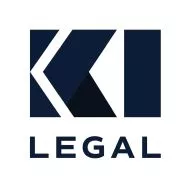Commercial leases contain numerous provisions that impose various obligations on tenants. The most commonly known obligation is the tenant's obligation to pay rent. Tenants are also usually required to carry insurance that covers the property and take out the garbage. Although there are the general obligations that are allocated by law or custom, landlords and tenants can negotiate various obligations. One commonly negotiated obligation is the obligation to maintain and/or repair the leased premises.
The repair and maintenance provisions in a lease control which party is responsible for maintaining and repairing various facilities within the leased premises. In the event a tenant negligently breaks something, the tenant will, more often than not, be required to repair such damage. When it is unclear whether the landlord or tenant damaged the premises, it can raise the question of who is responsible for repair of the damage? Additionally, which party is responsible for the basic maintenance of the space and the systems within?
The simple answer is that the lease will determine the responsible party. The negotiated terms of the lease dictates whether the landlord or the tenant will need to repair the damage that the premises sustains. The lease will also state who needs to maintain the premises in its original condition (normal wear and tear excepted). Lease negotiations can even extend to the type of lease the parties are executing. For example, the terms of a triple net lease call for the tenants to be responsible for most, if not all, of the overhead expenses incurred in the upkeep of the premises and paying fees associated therewith. In a triple net lease, it is expected that the tenant will be responsible for the maintenance and repair obligations. However, in a standard lease agreement, most often the tenant is responsible to repair any damage that the tenant causes and any damage that happens within the premises, but the landlord will be responsible for the maintenance of building systems (i.e., plumbing and electrical), damage that the landlord causes, in addition to maintaining and repairing the structural elements (e.g. roofs, foundations, etc.) of the building where the leased space is located.
As you can see, it is important to understand the type of lease that you are entering into before you start negotiations, as it will invariably change the repair and maintenance obligations a tenant has to undertake. When negotiating a lease it is advisable to be represented by an attorney who understands the different types of leases and the negotiating techniques that allow a party to get the best possible terms, including repair and maintenance terms, in any type of lease. Our experienced real estate attorneys here at KI Legal are ready and able to help assist you.
The content of this article is intended to provide a general guide to the subject matter. Specialist advice should be sought about your specific circumstances.

